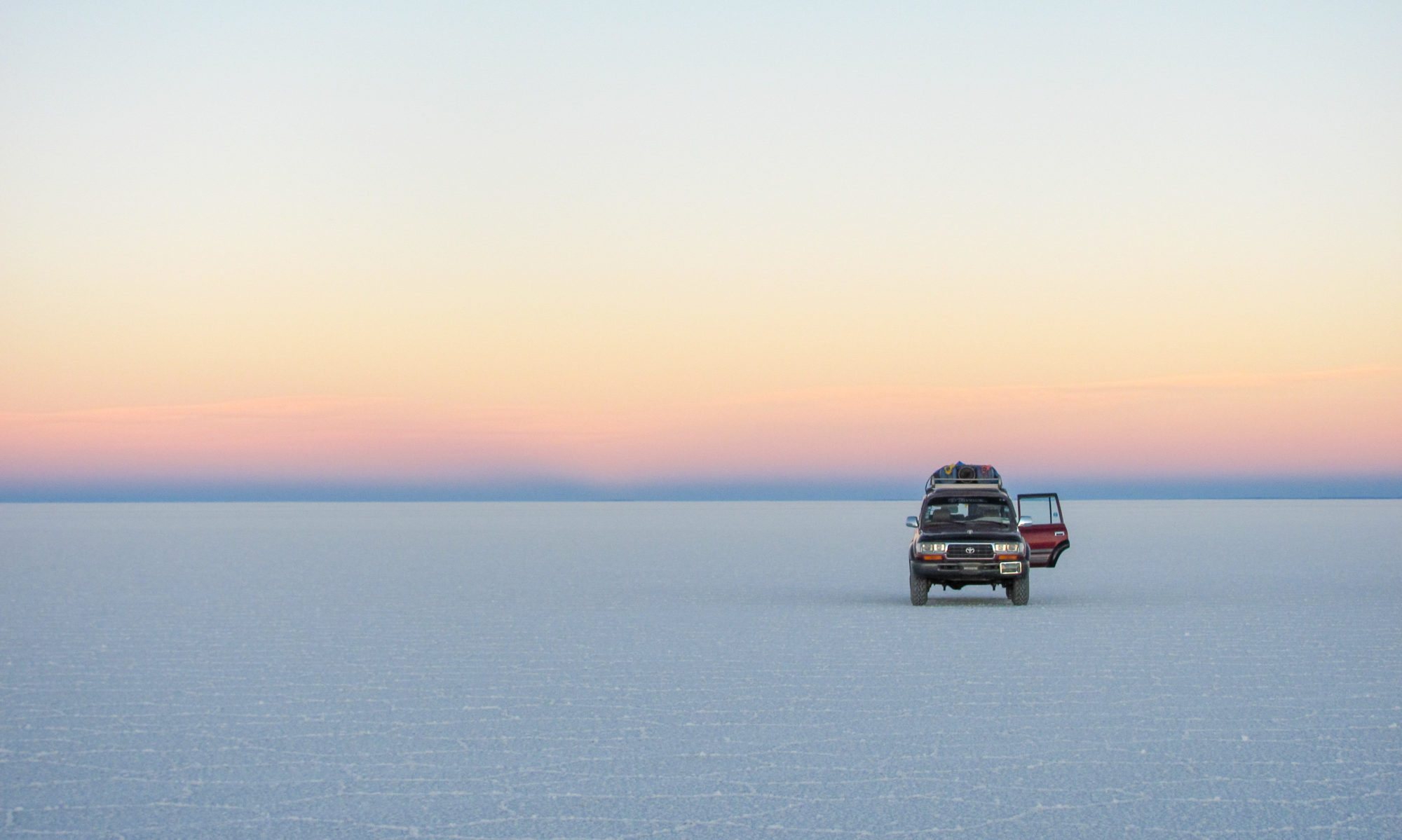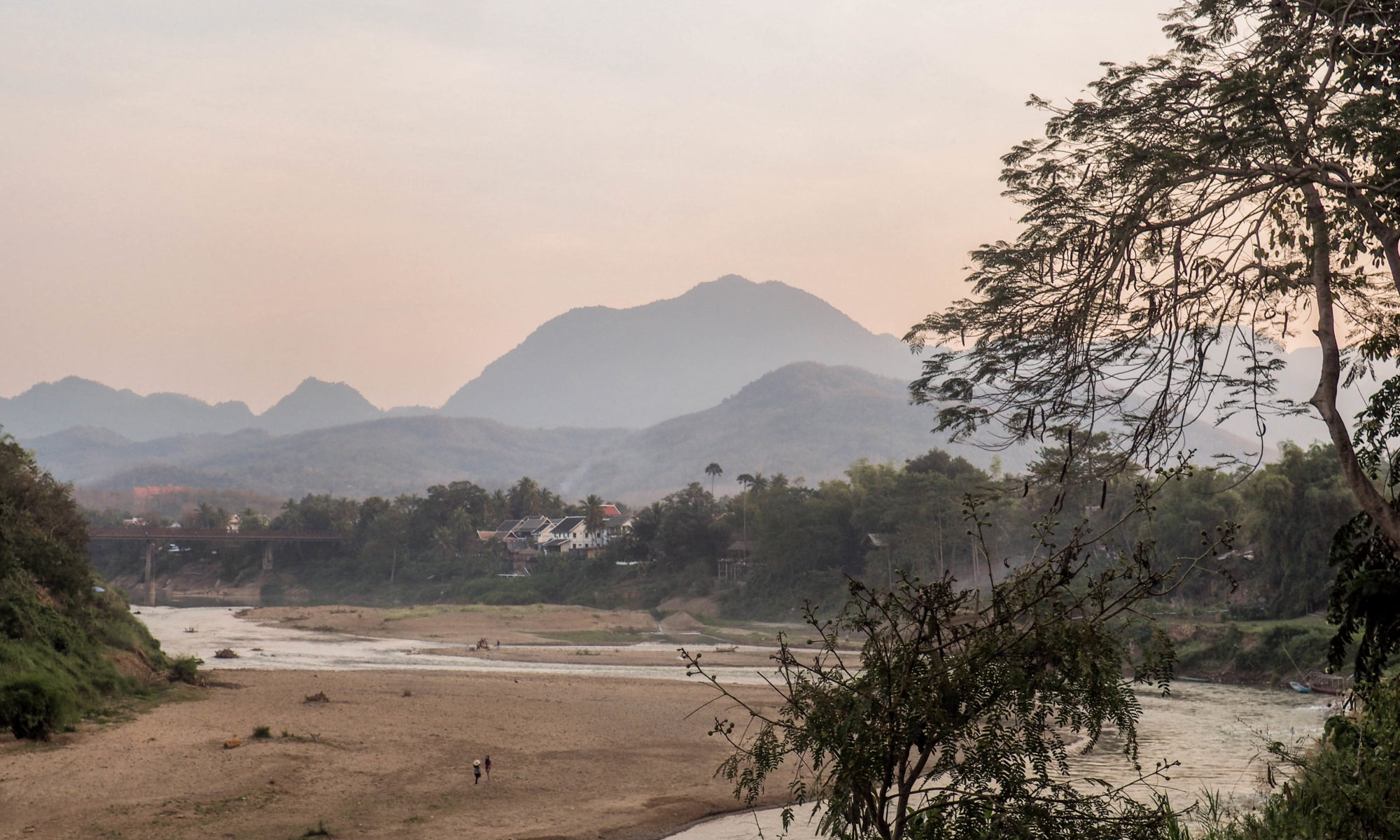Laos in one week? Is that even possible? Well no, not really. I know, great way to start an article about seeing Laos in one week. The truth is that Laos is a rough and underdeveloped country which means low pace travel is ideal. But if you don’t have the time, because you are combing this trip with a visit to Thailand or Vietnam, this itinerary is perfect to see all the highlights of this often overlooked Southeast Asian country. ‘A glimpse of Laos’ or ‘Highlights of Laos’ might have been a more suiting title. Ah well, let’s just get on with it.
– Itinerary –
Day 1: Arriving by boat
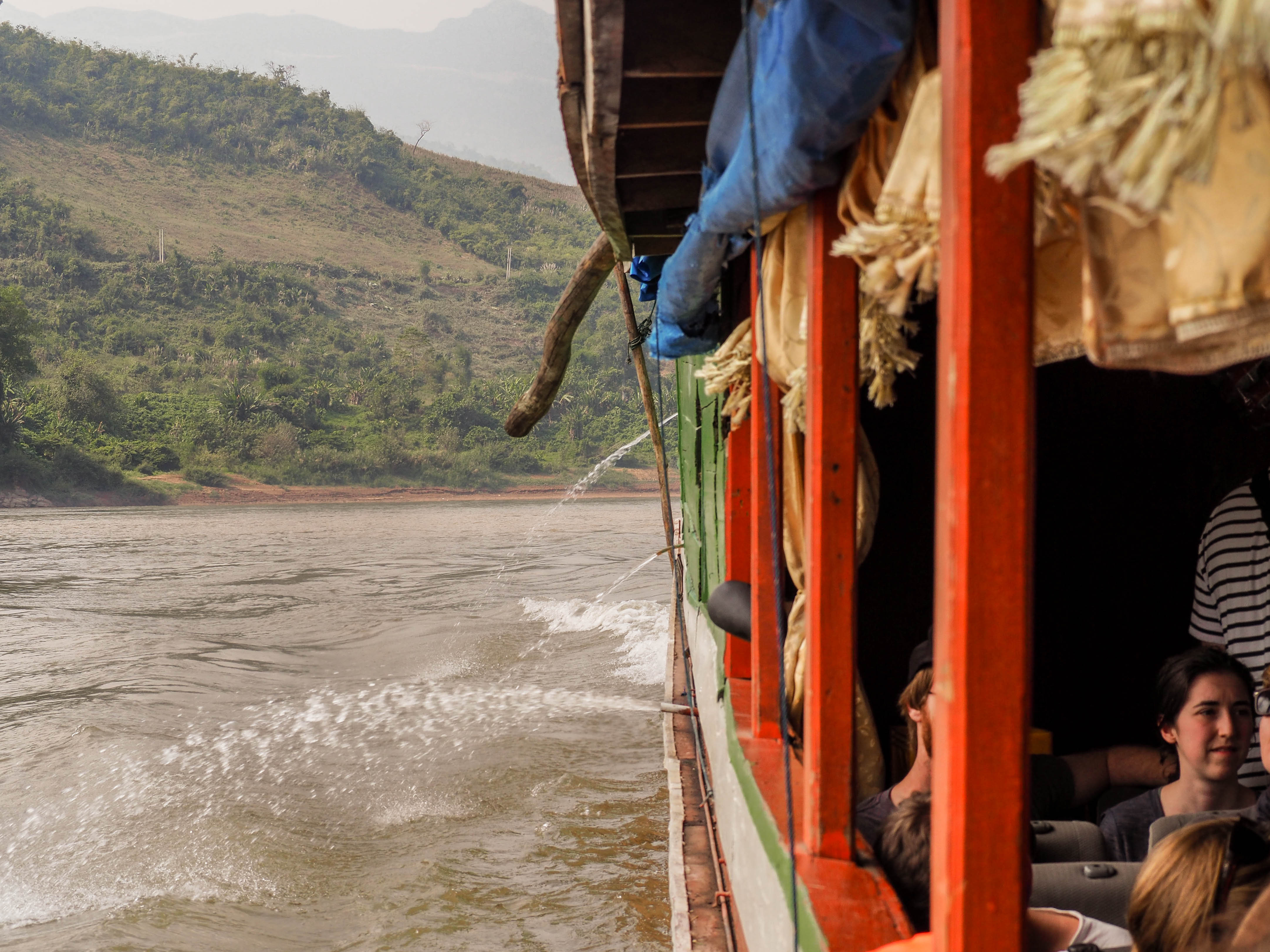
Let dive right into it. About 90% of the travellers enter Laos either by air, arriving in Vientiane or Luang Prabang or by boat from Thailand. I am assuming you were planning on doing that too (I know, I only take a guess when the odds are in my favour;) ) so if you are flying into Vientiane all you need to do is read this itinerary backwards. If you are planning on arriving from Northern Thailand by boat, great. That is definitely the best way of doing it. If you are planning on flying into Luang Prabang, hopefully, there is still time to change your ticket because you’re about to either overcomplicate your route or are skipping one of the best parts of the county.
Check out this article to get detailed information on taking this 2-day slow boat from Thailand to Luang Prabang.
Taking the slow boat
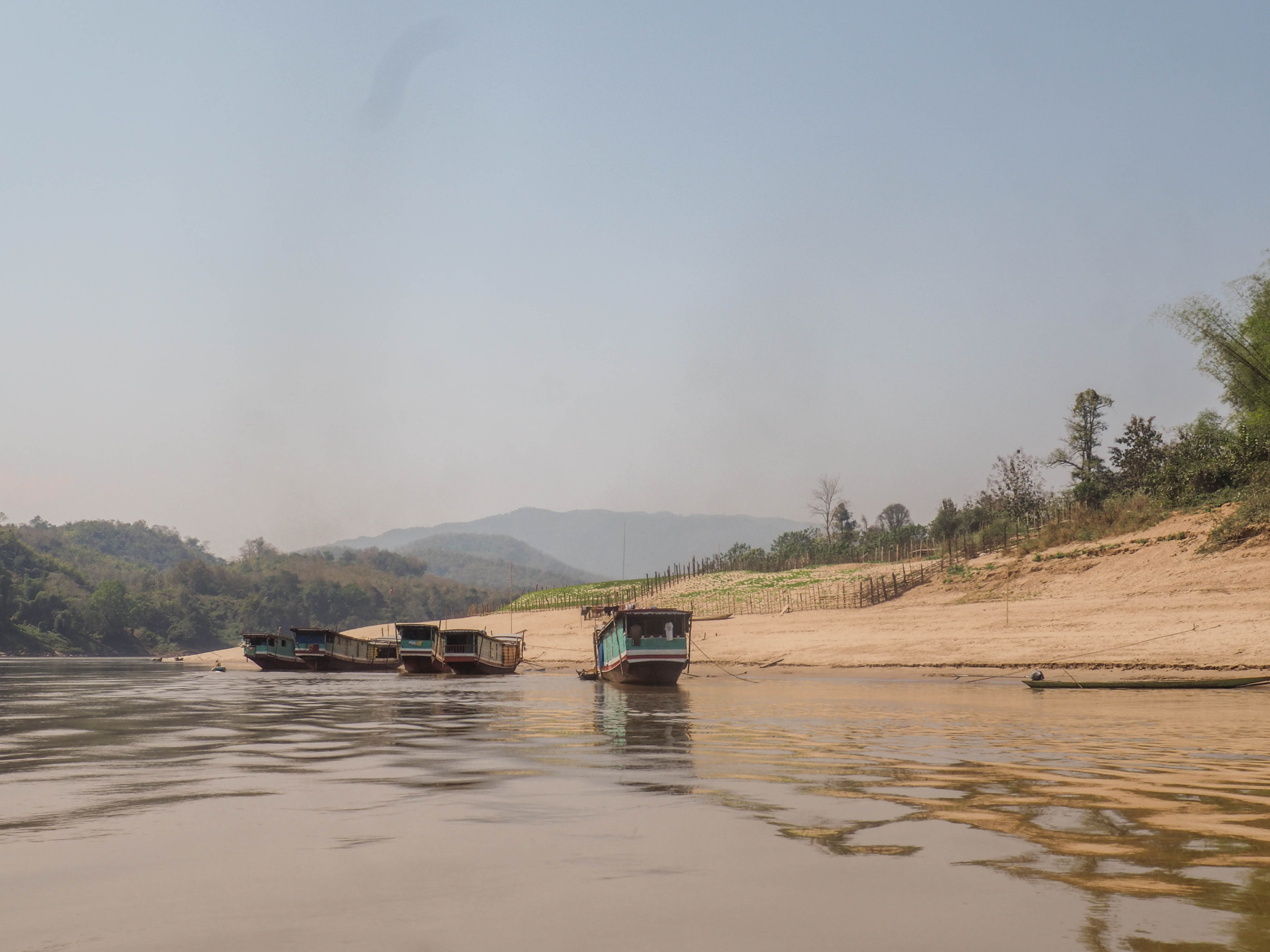
This itinerary starts right after you crossed the Thai border, in the border town called Huay Yai. The slow boat leaves around 9:30 AM, and if you want a comfortable ride you better make sure you are not one of the last 50 people to get on. Pack enough snacks because you are going to be on this boat for a while (although they do sell food and beer on the boat as well). Once you figure out that all the seats in the boat are actually loose and you wrestled yourself some extra space the ride gets really enjoyable. Slowly you decent on the Mekong River and the scenery is awesome. You pass by small fishing communities, see buffalos grazing along the shore and children swimming and bathing. As the day continues you feel the humidity rise and the scenery shift a shade greener. Fields get replaced by stretches of jungle forest. Flatlands make place for large overgrown hills and around 5:30 PM you arrive, in Pak Beng. Just in time for sunset.
Pak Beng
Pak Beng is a small town and largely depends on visitors taking the slow boat. There are a few good places to get a bite and have a drink which is probably all you can muster after all the impressions from today. Sleep in the awesome (eco-friendly) Sanctuary Lodge with killer views over the Mekong River.
Day 2: the boat to Luang Prabang
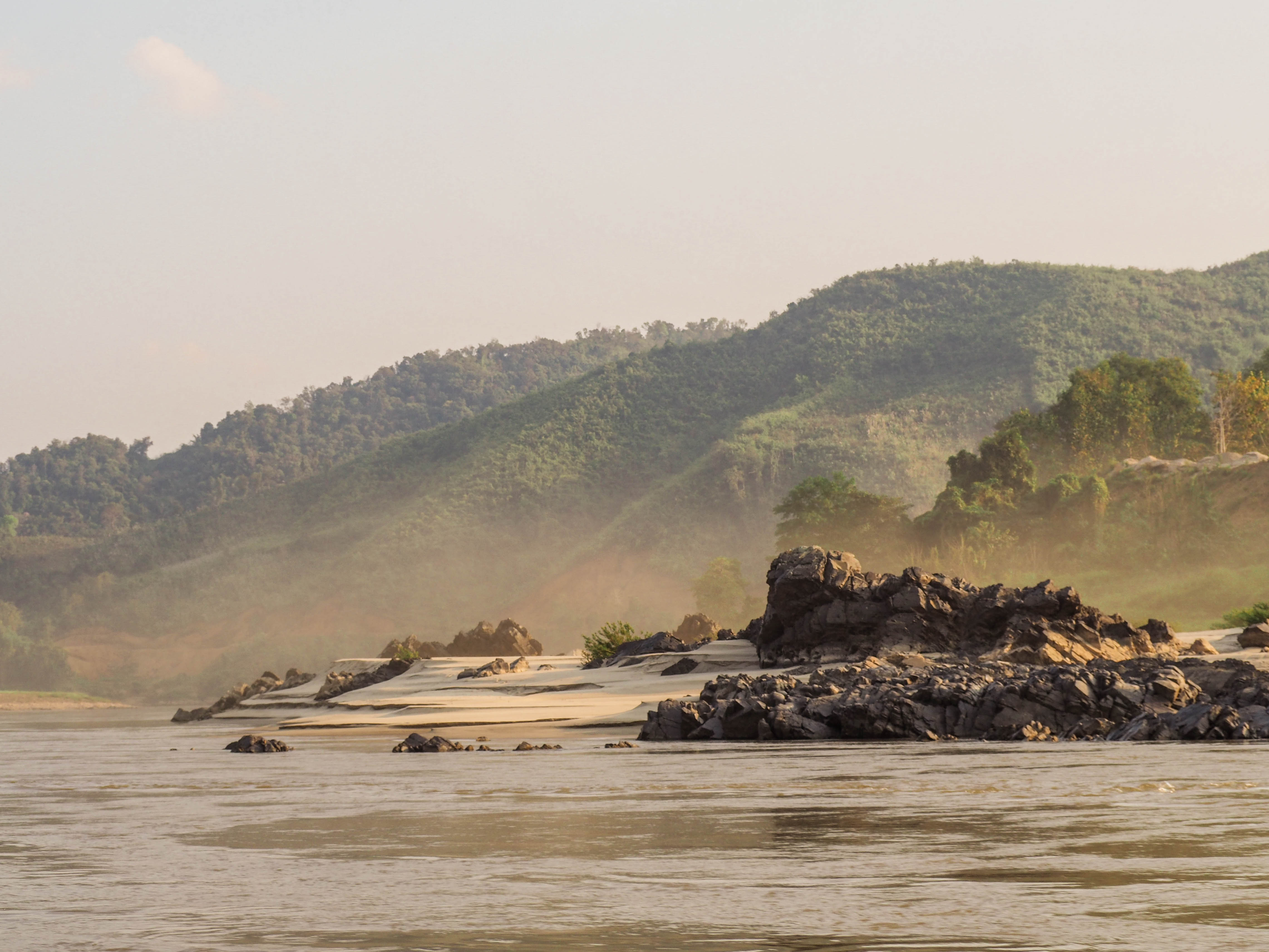
The second day starts rather early again as the boats to Luang Prabang leave around 9 AM. That’s right, I said boats. Plural. Because the river is more shallow for this second part, the big boat from day one can’t get through. The group is divided up in three which is actually a good thing because the boats are only slightly smaller. Way more space, way more comfort. This day is another day of soaking up the incredible sights along the way. The scenery turns less green again and the river, now and then, is interrupted by rapids. Big grey rocks protrude from the water and the jungle hills grow further apart and turn in to high limestone pinnacles. This is the Laos you have seen on the pictures. The views are the best on the last bit right before you drift into Luang Prabang around 4 PM.
From the pier, you take a (shared) taxi into town. Use the evening to stroll around on the incredibly charming night market, after which its time for some drinks and socialising in the best (outdoor) bar in town: Utopia.
Sleep in Sabai Sabai hostel if you are looking for a social place. Head over to Hillside nature lifestyle lodge if you are in search of a beautiful tranquil place (and are packing a fatter wallet).
Day 3: Luang Prabang, seeing the UNESCO heritage city
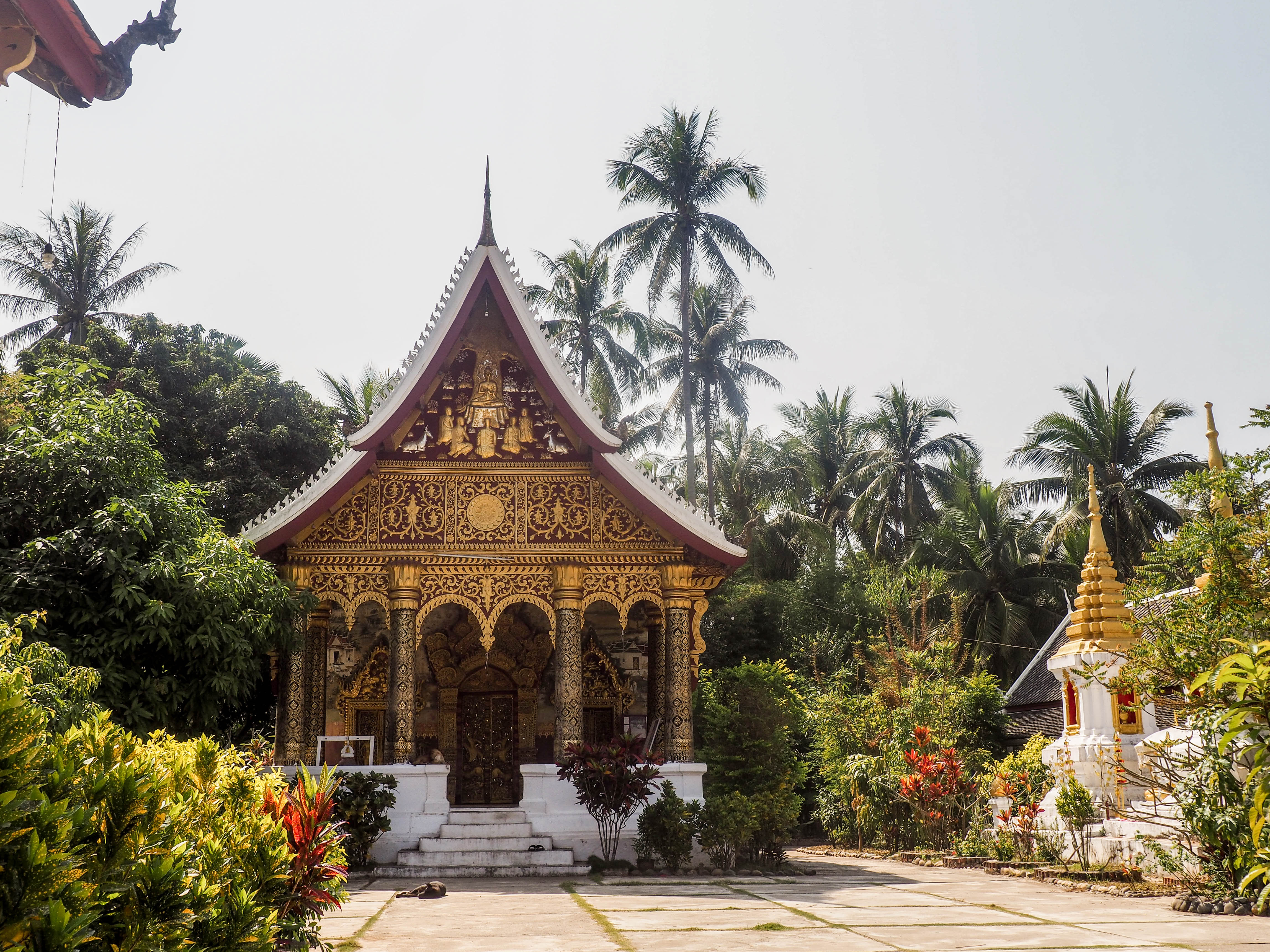
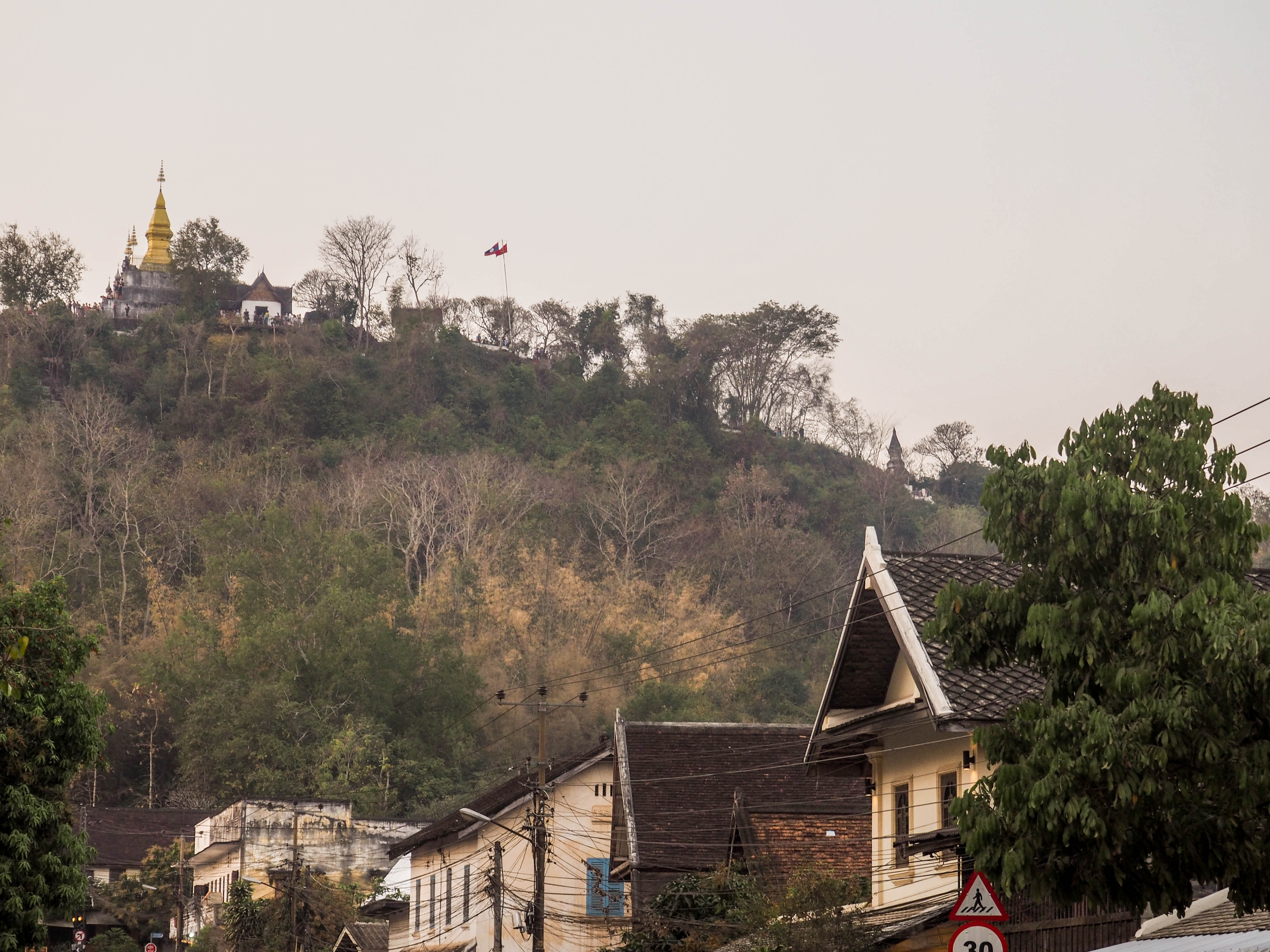
After breakfast, it is time to see some of Luang Prabang’s sights. While its still nice and cool start the day by climbing the Phou Si mountain, which towers over the city and gives an awesome 360 degrees view of the city. If you start your ascent from the backside, avoiding most tourists, you can take the main stairs back down which takes you right up to the entrance of the royal palace. Luang Prabang is a Unesco heritage city so one of the best things to do is just walking around enjoying all the perfectly restored colonial buildings. Use the rest of the morning to wander around town and see all the small temples dotted around the historical centre. Don’t skip Wat Xiengthong, the best in the bunch.
When it gets too hot, cross the bamboo-bridge to get to Dyen Sabai for lunch and to relax for a couple of hours to avoid the midday heat. When it gets to the end of the day head back and have a refreshing shower in your hotel before getting ready to go visit a traditional Lao storytelling. Have dinner at Nishas, an incredible little eatery where they serve the best Indian food I’ve tasted in Laos.
If you are up for it, there are many nice bars and social places in Luang Prabang, the weirdest place to go to at night? The Bowling Alley, which is an actual bowling alley except that it is the only place that stays open after 12 and therefore is filled with drunk backpackers from that moment until early in the morning.
Sleep in Sabai Sabai hostel if you are looking for a social place. Head over to Hillside nature lifestyle lodge if you are in search of a beautiful tranquil place (and are packing a fatter wallet).
Day 4: Luang Prabang, the Kuang Si falls
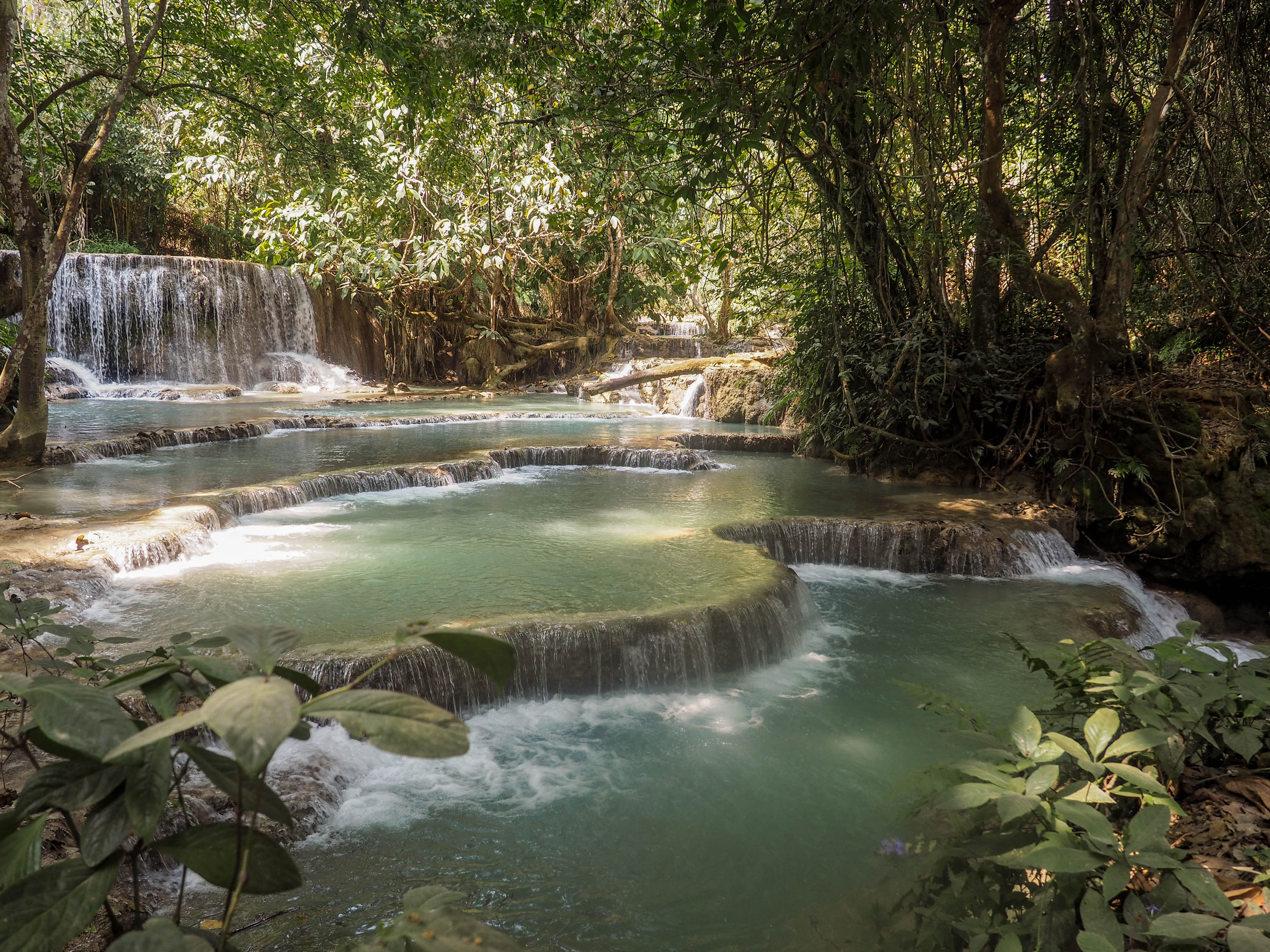
Have breakfast at your hotel or get your morning caffeine fix at Saffron, one of the best coffee houses in town. Now you’ve seen the town it is time to visit the main draw of Luang Prabang, the Kuang Si waterfalls. Mint-blue waters cascade from the one pool to the next. Many big enough to allow for swimming. Visiting the Kuang Si waterfalls is a full days activity so this is all the plan you need for today. I cycled to the waterfalls, which is an awesome thing to do considering the roads are reasonably flat and the distance to cover is only about 30 kilometres. Read my article on the Kuang Si waterfalls here to get the details, or just click the title of this paragraph, which you will probably have figured out by now;).
Spend the evening however you like, but this is not the night for drinking, because if you follow this itinerary precisely, your alarm clock will go off very, very early in the morning.
Day 5: The old route to Vang Vieng
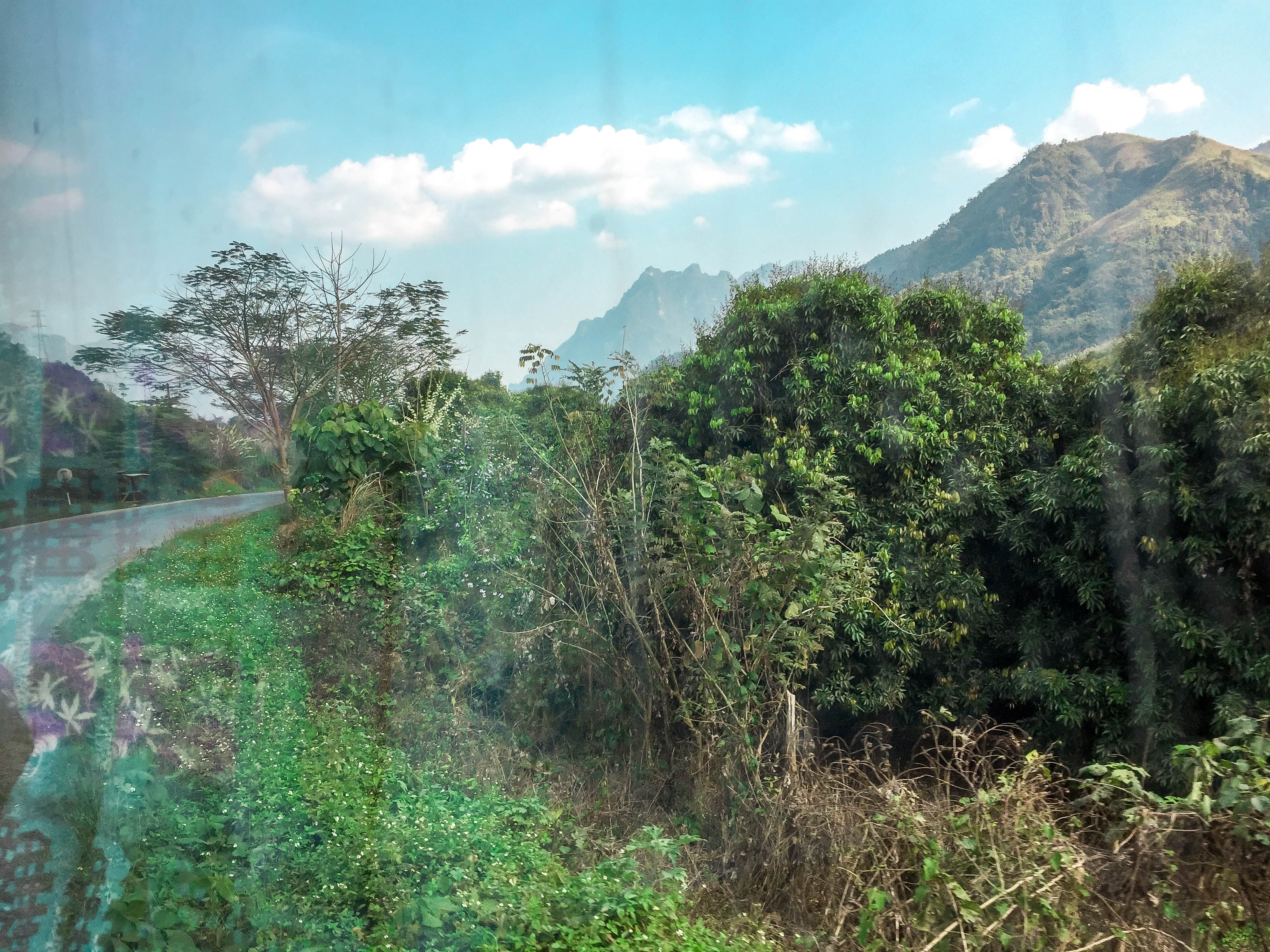
4:30 AM, yay! Morning, time to get up. Why? To see or even participate in the almsgiving of the Monks. A daily ritual where the monks get up to go to the monasteries before sunrise and the citizens will greet them and support them by giving them small balls of rice. The rice is sold everywhere on the streets in the morning, but buying the cheapest kind is considered an insult. Either buy proper rice or just go see but not partake in the ritual.
After the ceremony its time to take a bus to Vang Vieng. Head over to the Soutern bus terminal and take a bus that is taking the old route. Read here why. The road is incredibly bumpy and full of turns, but the views are like something that was taken straight out of the Lord of the Rings. The whole ride takes about 7-8 hours and when you arrive you will probably be exhausted. Arriving just after sundown, all the programme you need for the night is finding a nice spot to have a bite (Happy Mango) and call it a day.

Sleep in Vang Vieng Backpackers 2 for the cleanest social hostel in town, or splurge (EUR 55 a night) on the utterly beautiful Vieng Tara Villa (its setting in the rice fields is amazing). As a compromise between the two, VangVieng Eco-lodge is a great pick.
Day 6: Vang Vieng, tubing and rock-climbing
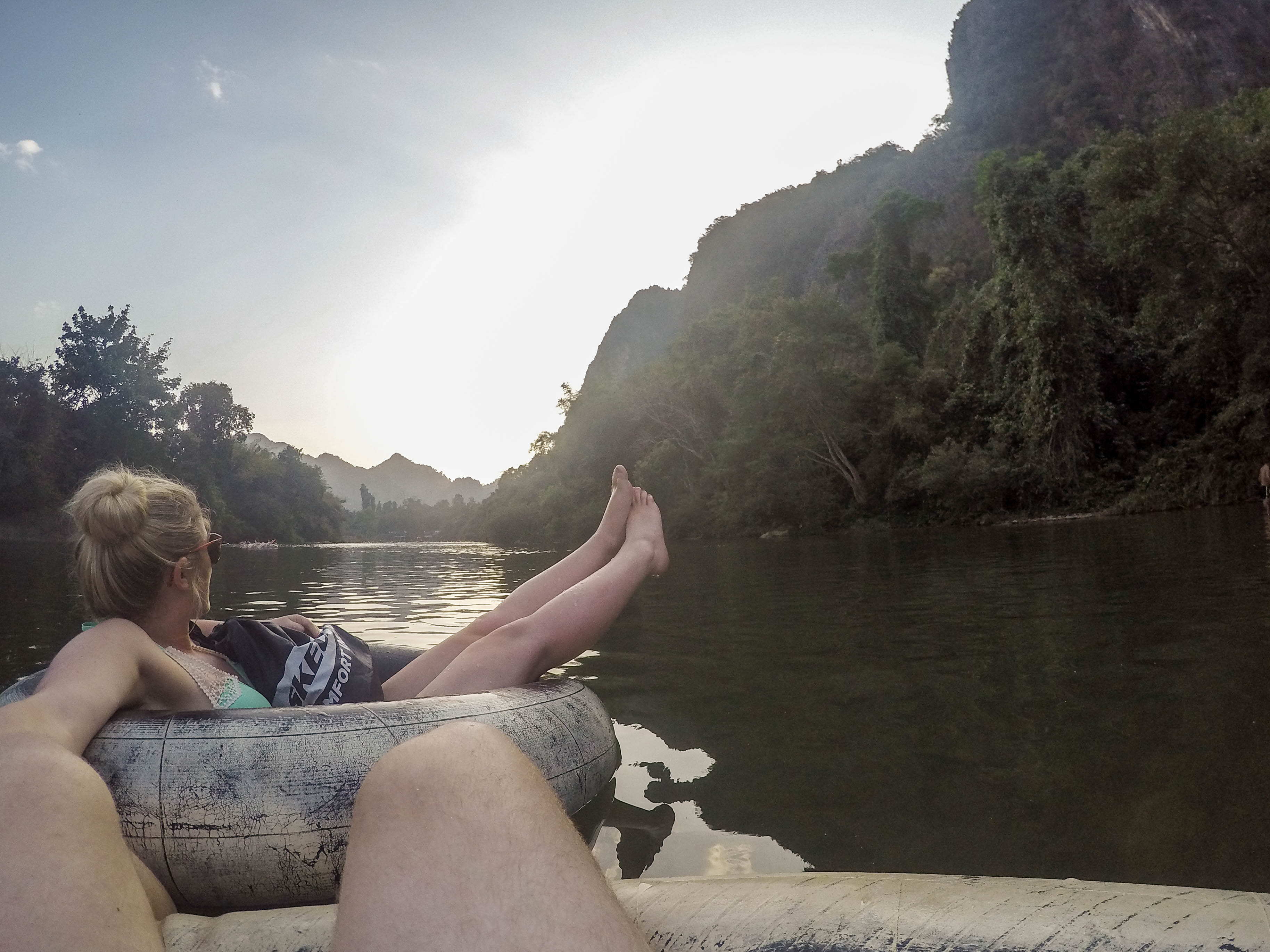
Vang Vieng is known as the adventure capital of Laos so today is about adventure. A great way to see the river is by going tubing: taking an old tire to float down the Nam Song river. This activity has always been notorious for it being a heavy drinking activity, but when the accidents involving intoxicated backpackers got out of hand, the authorities made clean house. Nowadays you can still get your fix a the riverside bars, but families and other travellers happily join into the tubing as well.
Tubing is a full day activity, and considering we only have a week it is time to make choices. Besides, Vang Vieng isn’t a pretty town so you probably don’t want to be hanging out here for too long anyway. An alternative to Tubing is going rock climbing or visiting a few blue lagoons which are dotted around town. You can consider adding an extra day to your itinerary if you have the time but if you don’t I recommend going tubing. The blue lagoons are cool, but similar places can be found all around the world. The rock climbing is really excellent and also great value for money but the tubing is both unique and a relaxing way to socialise while seeing some of the environment. Take care not to swallow the water, I got sick for four days afterwards.
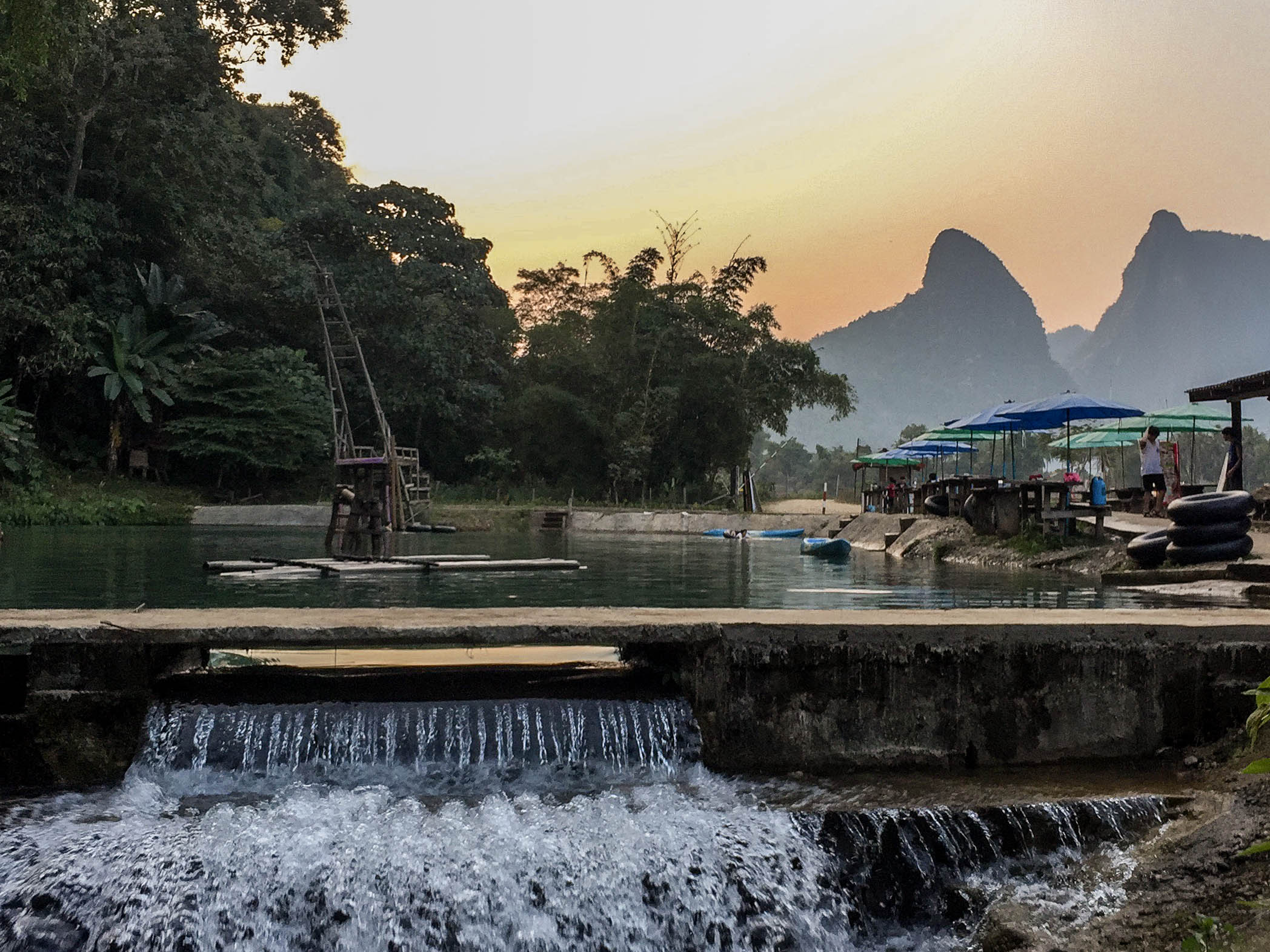
Sleep in Vang Vieng Backpackers 2 for the cleanest social hostel in town, or splurge (EUR 55 a night) on the utterly beautiful Vieng Tara Villa (its setting in the rice fields is amazing). As a compromise between the two, VangVieng Eco-lodge is a great pick.
Day 7: Vientiane, seeing the capital
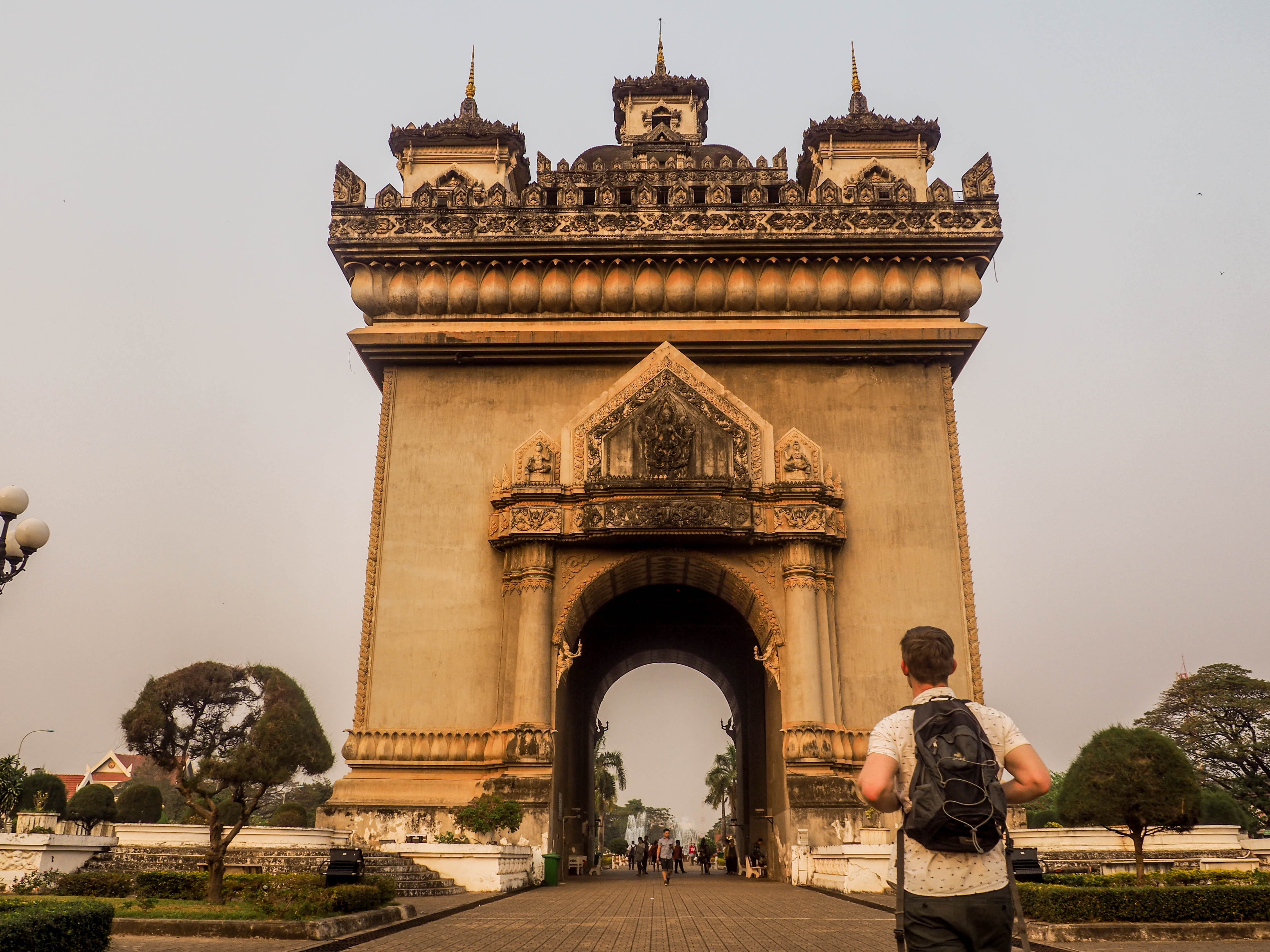
Get up early to take the bus south to the last stop on the programme, the capital Vientiane. The ride is only 4 hours over a well-paved road, so you will probably arrive sometime before noon. Vientiane is not exactly a pearl to the eye but there are some interesting spots to visit. The first on the list has got to be the Cope Visitor Center, where you learn about the ‘secret war’ and how Laos is slowly recovering from it. Next up, head over to Pha That Luang and Patuxai (get there before 5:30 PM to actually get up to the roof and get a view of the city) to see some of the cities’ finest architecture.
Considering Vientiane is also the most sophisticated city in Laos, this is probably the only place where you can get some decent fusion/ western style food. A personal favourite is Pomodoro Pizza, which was a live saver when I was there considering I was still recovering from my tubing adventure. Sleep at Sailomyen Cafe and Hostel, a pretty place with a great coffee house. They have both dorms as well as privates.
Day 8: say goodbye to Vientiane, say goodbye to Laos

The week is up, so this concludes the itinerary. From Vientiane, you can easily get an international flight to any other destination in Laos, Cambodia, Thailand, Vietnam or China. Crossing the friendship bridge into Thailand will only take about 30 minutes from where you arrive in Nong Khai, which has a railway station where you can take the night train to Bangkok or any other place in Thailand.
Adding extra days
By now you should have seen a fair bit of what Laos got to offer. You’ve seen the most important historical sights, the best temples, some of the best views and scenery and that all within a week. Admitted, there a quite a few iconic places that this programme skips. If you got an extra week the best thing to do is include a visit to the 4000-islands, and doing the Tha Khaek Loop on a motorbike (or MTB if you got even more time). Got another week? Include Phonsavan and its Plain of Jars on the way from Luang Prabang to Vang Vieng, and Savannakhet further south.
– Practical information –
When
Laos follows the same season as most of South-East Asia. Dry-season is from November until March, with the best months being December – February (sunny, pleasant temperature and not too humid). April and May are steaming hot and June to August are the wettest months of the Monsoon.
Budget
| Daily budget | EUR 40 (45 USD) |
| Street food | EUR 3-5 (3-5 USD) |
| Dorm | EUR 8 (9 USD) |
| Double in a boutique 3-star hotel | EUR 40 (45 USD) |
A lot of people that visited Laos (or backpacked through Southeast Asia but didn’t actually go into Laos) will tell you that it is dirt cheap. I am sorry to tell you that that is a lie. Laos is undoubtedly affordable but it is definitely not as cheap as some of its neighbouring countries. The main reason? It is extremely poor and tourism is still largely underdeveloped. I know this sounds contradictory but hear me out.
As a landlocked country with very little development, including a poorly developed agricultural economy, Laos for almost all goods Laos is largely dependent on import from its neighbouring countries. Import means additional costs of transport for everything. Rice and meat all cost a bit more compared to Thailand or Vietnam (and especially compared to Cambodia), which means street food also is a tad more expensive. Laos also imports electricity from Vietnam, which causes the electricity prices to be roughly four times the prices in Western Europe. This causes hotels to raise their prices. In general, take into account the following prices (not travelling on a shoestring but keeping a budget in mind).
In & Out
Getting into Laos from Thailand means either taking the boat from Thailand, crossing one of the four friendship bridges, from Thailand or Vietnam or getting into the country by air on either Luang Prabang’s or Vientiane’s international airport. Almost all countries are eligible for a visa on arrival so you don’t have to be afraid of too much trouble arranging stuff, although it is adamant that you bring a couple of passport photos and a few copies of your passport to avoid having to pay a lot of money for having your picture taken at the border.
For details on getting in and out of each individual place in this itinerary, simply click on the title to get all information you need.
